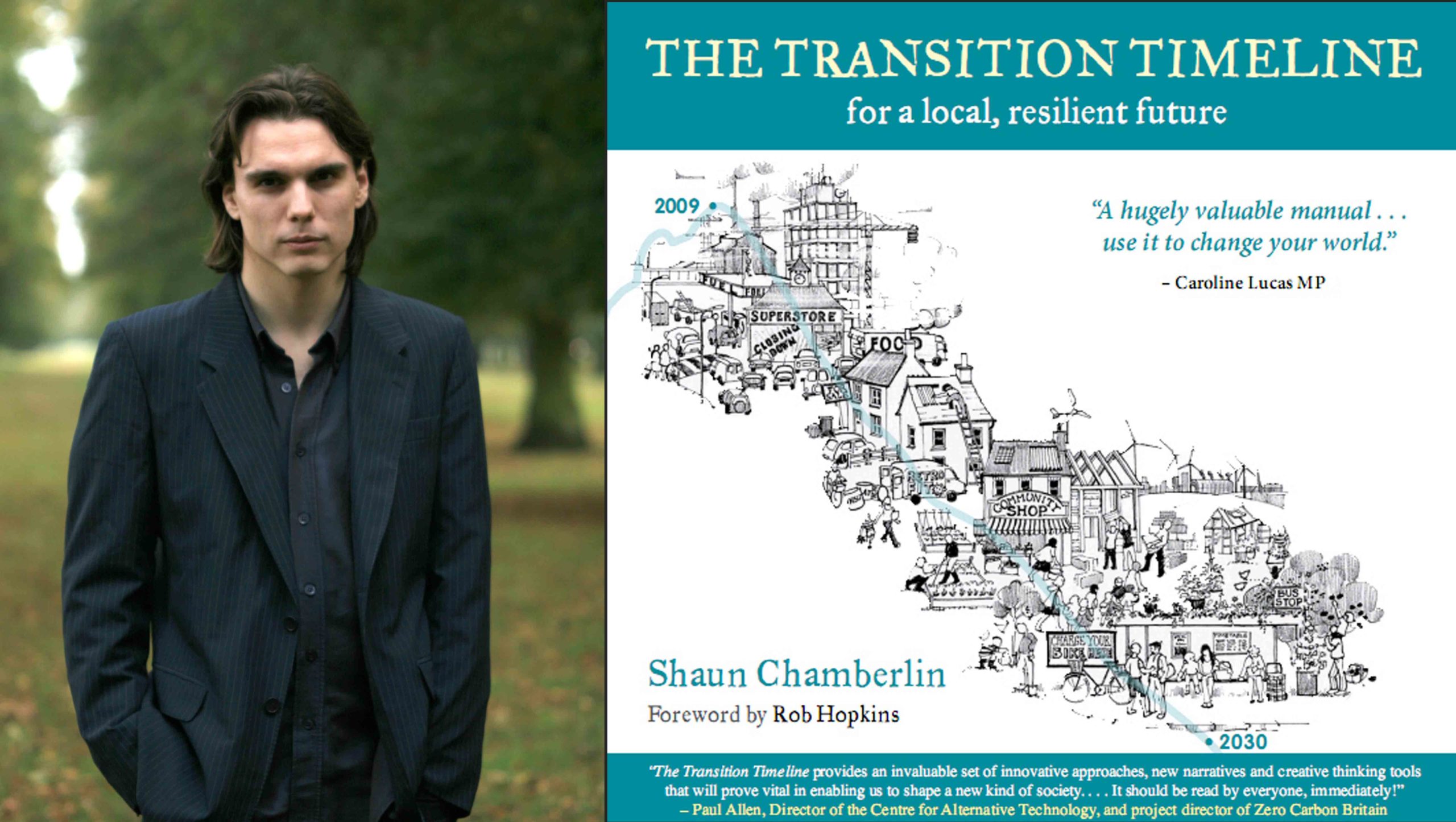Originally published in the Summer 2009 issue of Clean Slate – The Practical Journal of Sustainable Living
A PDF of the full illustrated article can be found here
Blanche Cameron: What caused this book, The Transition Timeline, to come about?
Shaun Chamberlin: Primarily that Transition communities were asking for support. They were trying to form positive visions of the future for their communities, but were finding it a little foggy looking twenty years ahead, particularly with regard to the bigger trends and policy decisions around climate change, peak oil, food supply and the like. There was also a need to really make Transition’s vision of a resilient, satisfying future as tangible and fleshed out as possible.
BC: You talk in the book about four stories of the future: Denial, Hitting the Wall, The Impossible Dream and The Transition Vision. Where do we find those narratives in the UK at the moment?
SC: A good example of ‘Denial’ would be most government planning documents. Apocalyptic ‘Hitting the Wall’ scenarios are seen in many films, such as the recent Age of Stupid, ‘The Impossible Dream’ might be Star Trek, with its unlimited technological fixes, and the Transition Vision…well, the closest existing analogy Rob Hopkins could come up with was Wallace and Gromit!
What we need is for this positive, realistic vision to find a central place in the popular mindset, to really get people out of bed in the morning. The Age of Stupid has done a great job of showing how bad things could become, but we also need to set out the desirable, practical alternatives. We want to see these ideas spreading into films, soap operas and throughout popular culture.
BC: And doing it through stories – theatre, film, soaps and the like – makes it easier for people to absorb sometimes than preaching at them.
SC: Yes, it’s the paradigm shift in our behaviour, which a character can play out for us first. It helps us visualise how we can do things differently.
We need to supplement the existing approaches of individual action and marches and protests asking government to do something, which can both actually be rather disheartening. This is where Transition comes in – getting together to act as a community, without asking permission, alleviates the sense of impotence in acting alone, and the fear of simply being ignored when asking for others to do something.
BC: Is The Transition Timeline a philosophical background to Rob Hopkins’ Transition Handbook?
SC: Well, it is at heart a very practical book, but I do feel that it is hard to do environmental work without some form of underpinning belief system to fall back on when confronting difficult realities, whatever that might be. So when it felt appropriate I do touch on those areas. So many people are feeling despair and burn-out, but in any situation there are always better and worse courses of action, and working together with our communities – acting on a human scale – has an amazing power in it. As Edmund Burke said, ‘nobody ever made a greater mistake than to do nothing because he could only do a little.’
There’s also that wonderful Chinese proverb: ‘If you don’t change direction, you are likely to end up where you’re headed’. The recent G20 meeting is a classic example of us not changing our direction, but rather pumping more and more money into our old ways to try to keep them alive. Many alternatives do exist, but fundamentally it seems that we need to get away from the idea that greater consumption automatically equals a better life. Although we are consuming vastly more energy and resources than ever before, we actually seem to be less happy. And we are destroying Nature’s ability to support us to boot. So given the choice between a happier life and a future or neither, I know which way I lean!
BC: So what’s next for Transition?
SC: Who knows? That is up to the huge numbers of people shaping its future, and that of our world. There are hundreds, maybe thousands, of Transition initiatives starting, and it is starting to become mainstream, which is both exciting and challenging – I was recently interviewed on Transition by Elle magazine! The future for The Transition Timeline is that we plan to put it up on Appropedia so that as many people as possible can get involved in revising and co-creating the vision of the future we want to build. There’s also a forum on the Transition website to discuss The Transition Timeline.
–
Blanche Cameron is a community green builder, lecturer at the Graduate School of the Environment at the Centre for Alternative Technology and a director and trustee of RESET, a charity working with communities and organisations to increase resilience to climate change.

